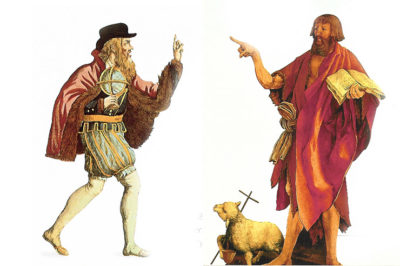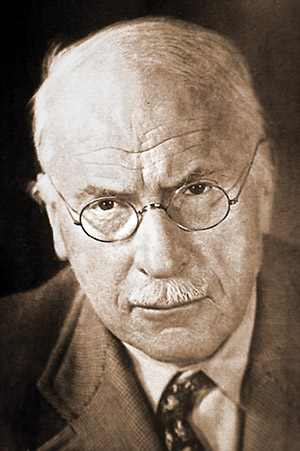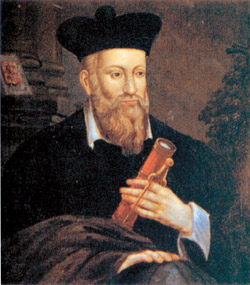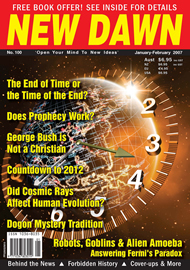From New Dawn 100 (Jan-Feb 2007)
Elie Wiesel, in his sombre memoir Night, describes a poignant incident from his time in a Nazi concentration camp. Amidst unimaginable suffering and despair, an inmate named Akiba Drumer “had discovered a verse from the Bible, which, translated into numbers, made it possible for him to predict Redemption in the weeks to come.”
There have been countless Akiba Drumers over the last 2,000 years. Confronting dismal memories of the past and the bleak actualities of the present, they have turned to the future for hope and solace.
The trend is not necessarily as old as humanity itself. While traditional mythologies ranging from those of the Hindus to those of the ancient Germans spoke of the rising and passing of ages in cycles, the Abrahamic religions – Judaism, Christianity, and Islam – have tended to see history as aimed toward a final destination point, an end of time in which the ledger books of justice will be balanced and all of humanity will be marched off to either salvation or perdition. This is sometimes called the Apocalypse, and literature devoted to it is called apocalyptic.
What exactly is prophecy? Can we trust it?
The esoteric tradition – the body of knowledge that underlies all the great spiritual traditions of humanity – teaches that the future is, at least in principle, knowable. There are several theories to account for such events (and they are not mutually exclusive). One of these holds that there exists a realm of images and forms, which has many names in many traditions. The Kabbalists call it the world of Yetzirah, or “formation”; quite possibly it is what Australian aborigines call the Dreaming and what some Western occultists refer to as the astral realm. This realm of images does not exist in any physical sense, but all the same it has a reality of its own. If you think of a light bulb, say, that image in your mind has some reality, even some substance, although not physically.
Esotericism also teaches that this world of images is prior to the physical world: events and things manifest in this realm before they appear in palpable reality. Consequently, someone with reasonably clear access to this dimension – deliberately, through divination or prophetic contemplation, or spontaneously, through dreams or hunches or intuitions – should be able to see the future.
Some readers may wonder what this theory may have to do with synchronicity, a concept that is often invoked when people attempt to understand such forms of divination as the Tarot or the I Ching. Synchronicity in this sense is a coinage of the Swiss psychologist C.G. Jung, who defines it as an “acausal connecting principle.” Jung gives a case in point: “The wife of one of my patients, a man in his fifties, once told me in conversation that, at the deaths of her mother and her grandmother, a number of birds gathered outside the windows of the death-chamber.” Such incidents are common: I can tell similar stories from my own family. For Jung, the connection between these events – the deaths and the appearance of the birds – is not causal; that is, the impending death didn’t cause the birds to come or vice versa. But they are related by what he calls a “meaningful cross-connection.”
Jung’s attempt to characterise synchronicity as “acausal” appears misguided. He seems to be veering toward a connection that is not acausal in the strict sense; rather it implies a hidden factor lying outside the physical dimension that, so to speak, “caused” both the death and the appearances of the birds. Jung locates this hidden cause in the realm of the archetypes, the psychic forces that underlie the human mind and possibly reality itself. For Jung, “meaningful coincidences… seem to have an archetypal foundation.”
Granting this much, we are left with a theory very close to the esoteric doctrine sketched out above. Jung’s archetypal world is more or less identical to the realm of Yetzirah, of forms and images. As such it can give rise to two phenomena that have no obvious causal relation (such as a death and the sudden appearance of a flock of birds) and yet seem to be meaningfully connected. Jung made much of being scientific, and to a great degree he was – but his conclusions in many respects resemble those of the old occultists.
Another esoteric theory about seeing the future is based on the highly relative nature of time. Time, as Immanuel Kant argued, is one of the basic structural components of our experience, but it is a construct that our minds have imposed on reality. As hard as it may be to imagine, time has no absolute reality in itself (a conclusion to which contemporary physics may also point). If so, it may be possible to step past the portals of our own experiential framework and take some measure of events in the future.
Many spiritual traditions speak of a higher Self, a part of our being that stands over and above our selves as we customarily experience them. The names for this Self are countless. The ancient Greeks called it the daimon; the ancient Romans, the genius; to esoteric Christians, it is the kingdom of heaven or the Christ within. This Self stands outside the personality, the conscious self, and outside the categories of conscious experience, including time. It perceives our lives, not as a sequence of events and experiences that span several decades, but as a whole. It can see a lifetime as we can see a snapshot.
A famous instance of the workings of this Self appears in the Crito of Plato. Socrates, under sentence of execution, is urged to escape by his rich friend Crito, who assures him that he has bribed the guards and can furnish the necessary getaway. Socrates refuses, saying he has had a dream in which a beautiful woman dressed in white appeared to him and recited a line from the Iliad: “On the third day to the fertile land of Phthia thou shalt come.” Socrates takes this as a message from his daimon, the guiding spirit that has directed him all throughout his life, that he will be executed in three days, and that he should not try to escape. One way of understanding such episodes is that the daimon, the Self, can see the whole of one’s life from start to finish, apart from the linearity of time, and can give appropriate guidance.
Note, however, that, as in Socrates’ case, these glimpses usually have to do with one’s deeper destiny. It’s not a question of picking next week’s lottery number or finding hot stocks. While these are in principle no more unknowable than anything else, one soon discovers that the higher Self is not terribly interested in them – and anyway, how helpful would the knowledge really be? I know directly of only one case where someone got this kind of information. A friend of my father’s once told me he had been awakened in the middle of the night by the image of some numbers that flashed in his mind. It struck him that they might be lottery numbers and that he should buy a ticket using them, but he never got around to it. Of course they were the winning numbers that week.
If these visions of the future are ultimately personal in nature – that is, they are meant to give guidance or inspiration to an individual at crucial junctures in his or her life – what then of prophecy in a grander sense, the prophecy that purports to open a window onto the fates of nations and peoples, and of humanity itself?
As a whole, the record of prophecy in predicting the future on a large scale is not good. We can see this as far back as the start of the apocalyptic genre in Palestine in the second century B.C.E. At the time the Jewish nation was living under the rule of the Hellenistic Seleucid monarchs, who were heirs to a portion of the empire of Alexander the Great. In 167 B.C.E., one of these rulers, Antiochus IV Ephiphanes, embarked on a program of forced Hellenisation of the Jews. He set up an altar, and perhaps an image, of Olympian Zeus in the Temple in Jerusalem.
The Jews’ outrage is reflected in the Book of Daniel, one of the earliest apocalyptic writings and the only one to make its way into the Hebrew Bible. Written during the ensuing revolt against the Seleucids, this book sets up Daniel, a legendary sage of the sixth century B.C.E., as the mouthpiece of a prophecy that would “foretell” events 400 years after his time. (The technical term for this practice is vaticinium ex eventu, “prediction after the event.”) Daniel refers to “a vile person” – Antiochus – who will “pollute the sanctuary of strength, and shall take away the daily sacrifice, and… shall place the abomination that maketh desolate” (Dan. 11:21, 31) – that is, the idol in the Temple (cf. 1 Macc. 1:54). The archangel Michael will come to Israel’s rescue; the dead will be raised, “some to everlasting life, and some to shame and everlasting contempt.” Antiochus “shall come to his end, and none shall help him” (Dan. 11:45, 12:1-2).
What happened in fact was that the Jews rose up under the priestly clan of the Maccabees and won back their religious liberties as well as a measure of political autonomy, but this obviously did not begin the end of time. Antiochus did not perish as a result of any obvious divine wrath: he died of natural causes.
Despite its failure as a prophecy, the Book of Daniel established the basic structure of the apocalyptic genre. Arising during some crisis, such texts predict that this event is the harbinger of the imminent Day of Judgment, when justice will be done and evildoers will receive their due. The Book of Revelation at the end of the New Testament follows this pattern. Most scholars agree that it is a response to the Roman persecution of Christians in the first century C.E. Here, too, the prophecy, taken as literal truth, is not accurate. The book seems to foretell the end of the Roman Empire and the coming of a millennial kingdom, but this did not happen. The Roman Empire did come to an end (close to 400 years after Revelation was written), but it did not usher in the reign of God on Earth. Rather it initiated a period of collapse and chaos that came to be known as the Dark Ages.
Even the prophecies of Jesus as related in the Gospels do not seem trustworthy. If we are to read what scholars call his Apocalyptic Discourse literally (three versions of it appear in Matthew 24, Mark 13, and Luke 21), we would conclude that he was predicting the destruction of the Temple by the Romans, to be followed by the return of the Son of God. This did not happen either. The Romans did sack the Temple, in 70 C.E., about a generation after Jesus’s lifetime, but Jesus did not return and did not establish a millennial kingdom. Things went on much as they had (except for the Jews, who were expelled from Palestine).
I’m using instances from the Bible as it is by far the best-known work of prophecy, but if we were to look at prophecies from other sources, they would not look much better. The American trance medium Edgar Cayce foretold that much of California would be under water by 1972. Nostradamus predicted some kind of great manifestation in the sky for the seventh month of 1999, but the year 1999 had very little that was remarkable, much less cataclysmic, either in the seventh or in any other month. (For more on Nostradamus’s prophecies, see my new book The Essential Nostradamus.)
How, then, can we reconcile the abysmal performance of prophecy as a whole with the esoteric theory that I’ve sketched out above? If we can know the future, why don’t we?
The astral realm is a sea of images. We can think of it as containing every image and idea that every human being has ever thought and possibly will ever think. No sooner do we say this than we realise that this dimension must contain an enormous amount of psychic rubbish – the fears, dreads, and anxieties of humanity, most of which have nothing to do with reality past or present. This dimension is described most clearly in the spiritual text known as A Course in Miracles:
The circle of fear lies just below the level the body sees, and seems to be the whole foundation on which the world is based. Here are all the illusions, all the twisted thoughts, all the insane attacks, the fury, the vengeance and betrayal that were made to keep the guilt in place, so that the world could rise from it and keep it hidden. Its shadow rises to the surface, enough to hold its most external manifestations in darkness, and to bring despair and loneliness to it and keep it joyless.
Without going into the elaborate psychological system of the Course, I will simply point to the notion of the “circle of fear” – a zone of fears, hatreds, and anxieties that lie just below the surface of consciousness. This circle of fear is universal: each of us participates in its creation. Probably only the most enlightened human beings are entirely free from its effects. For the rest of us, it sits underneath our experience of reality like a water table. We all tap into it in our own ways.
This fear is not “about” anything particular; it is not necessarily connected to anything real or substantial; it is simply a nameless, objectless anxiety that can attach itself to anything. It holds tremendous power over each of us precisely because we are usually unconscious of it. We imagine that our fears and anxieties are about something real and justified, but there is something suspect about this belief: no sooner does one anxiety disappear than another pops up to take its place. For many people, this anxiety can manifest in fears about their personal future or about society or humanity or the Earth; for others, it is displaced onto a fear of an imminent end of the world.
Some say fear is a healthy and normal emotion, that without it we could not function in the world. So it may be under certain circumstances. If a man finds himself facing a wild animal, his fear will make him run away. But the kind of fear I am talking about is not healthy. It does not increase our chances for survival; instead it is weakening and debilitating. Much of mental dysfunction no doubt stems from too close a contact with this kind of fear.
Saying this much explains the horrific imagery of so many prophecies, but what about the nice part? What about the beautiful dreams of a utopian future that is always just around the horizon? The explanation is the same. The Yetziratic or astral realm is known to esotericists as the zone of illusion. We can think of it as literally a bandwidth of fantasies and illusions that surround us on a psychic level. While many of these fantasies are negative, there are also many that are positive; they are the flip side of the circle of fear. The power of wishful thinking – which is very strong – can easily lead someone to put all these images together into a picture of the future that involves both terrible calamities (usually visited on one’s enemies) and ultimate salvation (for oneself and one’s own sect). Akiba Drumer’s prophecy in the concentration camp most likely falls into this category.
Our age imagines itself to be more sophisticated than its predecessors, and yet the contemporary mind falls prey to many of the temptations of the past. Cataclysmic and millennialistic thinking is as much with us as ever. The religious-minded cast it in biblical images. The secular mindset translates it into visions of nuclear or environmental disaster. The problems posed by both nuclear power and environmental contamination are very great and should not be dismissed out of hand, but it is also well to separate them from unconscious apocalyptic expectations, which can erupt from the minds of supposedly rational scientists just as easily as they can from men wearing sandwich boards on streetcorners.
Having said this much, we might want to compare prophecy with prediction of a more conventional kind, which has evolved into an academic discipline (or pseudodiscipline) known as futurology. Futurology makes no supernatural assumptions. It is based entirely on what is currently known. It takes current statistics – about population, economic growth, political trends, resource capacity – and extrapolates them into the future. That is its strength but also its weakness. Futurology can only make predictions on the basis of current trends, but one thing we know is that current trends never continue. There are shocks, dislocations, cataclysms. Conventional forecasters cannot predict these; their unpredictability is at the root of their nature.
The apocalyptic prophet faces no such restrictions. He has no incentive to predict more of the same; who would pay attention to him then? So he is entirely happy to foretell all kinds of upheavals, natural and supernatural: the submerging of continents; the manifestation of extraterrestrials; the shifting of the Earth’s pole; the return of Jesus Christ. In a sense, he is right. Cataclysms do occur. But somehow they never occur in the way they were predicted.
In the end, I personally would not base my plans for the future on any prophetic claims from any source. I can’t say that none of these prophecies will be fulfilled – that would be making a prophecy of my own – but to my mind they haven’t been proved reliable enough in the past to merit any serious attention now. Conventional futurology may offer some insights, but frequently it, too, better represents the analyst’s preconceptions than any reality that is likely to come.
All this still leaves us with the possibility of a knowable future, whose seeds are present in the astral realm amidst all the fears and fantasies. How can we have contact with it? Trying to glimpse the future on a collective level is extremely tricky, often because it is something into which we as individuals are not supposed to stick our noses. Recently a friend of mine used the divinatory technique of horary astrology to ask a question about a national issue. Horary astrology, though not practiced or understood even by most astrologers, can produce quite striking insights for one who knows how to use it. In my friend’s case, the answer was quite sharp: “None of your business.”
When we come to the personal future, the situation is different. I myself have often found that when I needed to be told of something that was going to happen to me, I was informed of it, usually through some form of inner perception, bidden or unbidden. I have not found divination methods like the Tarot or the I Ching to be particularly useful. Astrology, on the other hand, can have remarkable predictive value – provided one knows the system well enough to understand what the stars are saying.
These are my conclusions from my own experience. Others may have different results; these matters are more individual than popular books like to let on. In the end, for me nothing has proved to be of as much value as a clear-sighted determination to see what was going on both inside and outside myself, to look upon my own hopes and fears and wishes, and to bring them face to face to what Freud called “the reality principle.” A.R. Orage, a pupil of the great spiritual teacher G.I. Gurdjieff, defined conscience in a rather unusual way as “the simultaneous experience of all one’s emotions.” If one can do this with a naked and even remorseless honesty (and it is considerably harder than it may first seem), one is far more likely to have an accurate basis for future action than if one follows the advice of any number of psychics or prophets.
© New Dawn Magazine and the respective author.
For our reproduction notice, click here.





